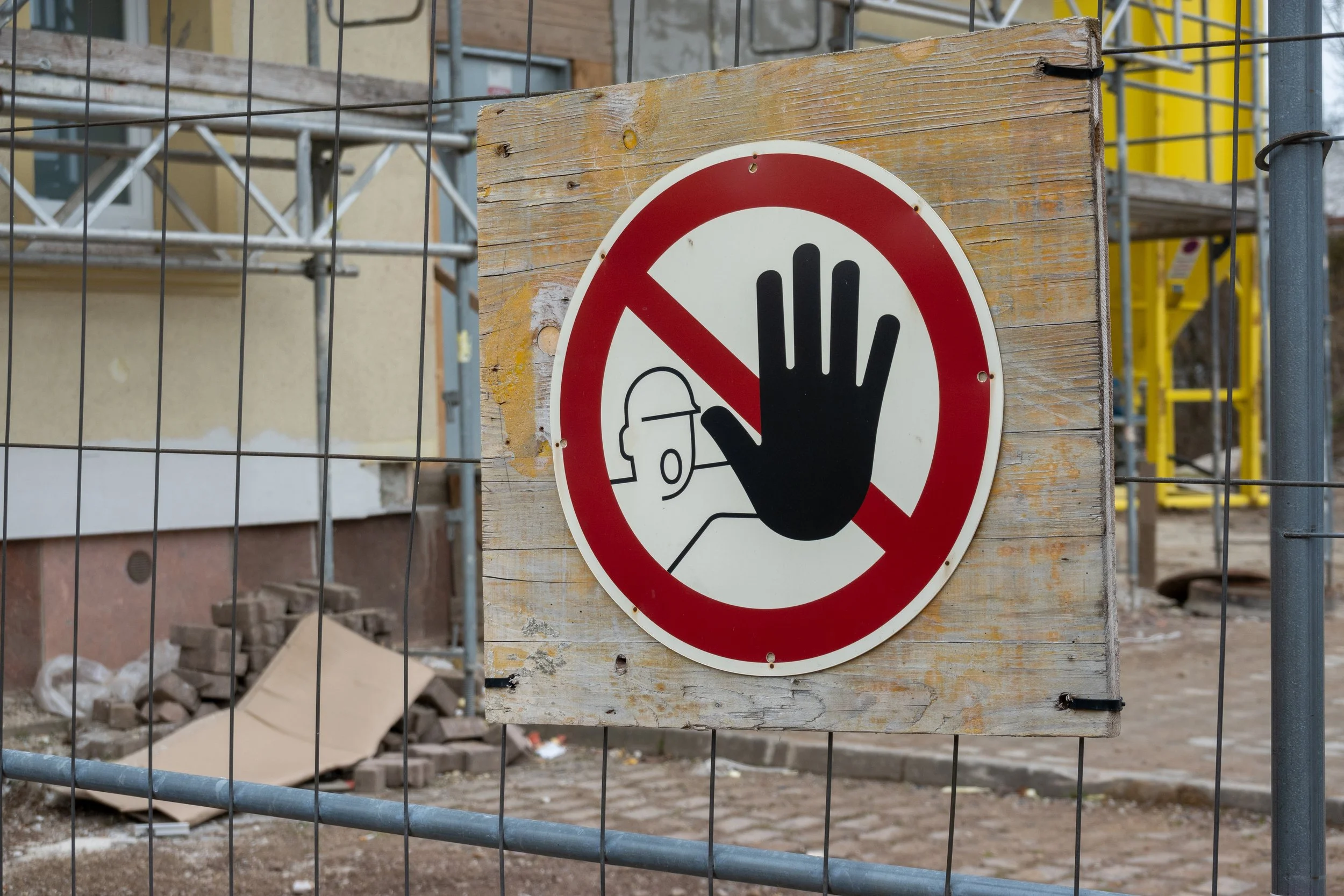The Ultimate Guide: When Should Personnel Enter Construction Sites? (2025 Safety Standards)
Construction sites are inherently hazardous environments filled with heavy machinery, elevated structures, and ongoing physical labor. Limiting access to authorized personnel and at appropriate times is not just a best practice, it’s a legal and safety requirement.
So, when should personnel be allowed to enter construction areas?
This blog explains the guidelines, regulatory expectations, and safety procedures that ensure only the right people enter, at the right time, under the right conditions.
Why Entry Control Is Critical on Construction Sites
Unauthorized or premature access to a construction site can lead to:
Injuries and fatalities
Project delays
Legal liabilities
Insurance complications
OSHA violations and fines
Implementing clear access control policies and understanding when personnel should be allowed on-site can significantly reduce these risks.
The 8 Critical Moments When Personnel Should Enter Construction Areas
1. Only After Safety Training and Orientation
All individuals, whether contractors, subcontractors, visitors, or inspectors, are required to undergo site-specific safety training before entering a construction site. This typically includes:
Hazard recognition
Emergency procedures
PPE (Personal Protective Equipment) requirements
Reporting procedures for hazardous conditions
2. When the Site is Deemed Safe for Entry
Not all areas of a construction site are safe at all times. Access should be allowed only when:
The area is structurally safe and clear of immediate hazards
Required signage and barriers are in place
Safety equipment (e.g., scaffolding, guardrails) has been properly installed
Environmental hazards (like gas, asbestos, or extreme weather) have been mitigated
Expert tip: Entry while crane lifts, high-voltage work, or excavation without shoring should be strictly prohibited unless required for the task and with appropriate PPE.
3. When Personnel Are Authorized and Have a Defined Role
Only authorized personnel with a specific job role should be present. These include:
Workers on the daily schedule
Supervisors or safety officers
Engineers or inspectors
Certified contractors
Unauthorized visitors or employees not scheduled to work that day should not be allowed into active zones, even for observation or brief visits.
4. Sign-In and Clearance at Entry Checkpoints
Construction sites should use entry management systems such as:
ID badge scanning
Digital sign-in via QR codes
Security guards at access points
Turnstile or gated entry with biometric verification
This ensures accountability and real-time awareness of who is on-site at any given time — which is critical in emergencies or evacuations.
Expert Tip: Consider using solutions like TokenMe, which uses smart badges and geofencing to monitor personnel location and time spent on-site.
5. Access Only During Approved Hours and Work Phases
Personnel should enter construction areas:
During approved work hours (typically 7:00 AM to 5:00 PM)
When the specific task or trade is scheduled
After work zones have been cleared and prepared
Early or after-hours entrance should be restricted to emergency personnel or authorized supervisors.
6. When PPE is Worn and Equipment is Inspected
No individual should enter a construction site without wearing the required PPE, which may include:
Hard hat
Steel-toed boots
High-visibility vest
Safety glasses or face shields
Fall protection harness (where necessary)
Tools and machinery should also be inspected and certified for use before site entry. Personnel who use faulty equipment can endanger everyone on-site.
7. Access Only with Proper Documentation or Clearance
For specific tasks or high-risk zones, entry should be dependent on documentation such as:
Permit to work (PTW) systems
Hot work permits
Confined space entry permits
Lift plans or job hazard analysis (JHA) approvals
This ensures that all parties are aware and have signed off on the risks of entering or working in hazardous locations.
8. Restricting Access During Hazardous Operations Unless Trained and Authorized
Certain operations require restricted access due to heightened danger, such as:
Demolition
Welding or hot work
Heavy equipment operation
Concrete pours
Structural steel erection
Only personnel directly involved, properly trained, and wearing task-specific PPE should be allowed entry during these operations.
Construction Best Practices That Save Lives and Money
Daily Operations:
Morning safety briefings for all personnel
Continuous hazard monitoring throughout shifts
End-of-day site securing procedures
Weather monitoring with automatic alerts
Emergency Preparedness:
Real-time headcount systems for evacuations such as TokenMe
Multiple communication channels for alerts
Designated assembly areas that are clearly marked with signage
Regular emergency drills with performance metrics
The Bottom Line: Access Control is Business Survival
Knowing when personnel should be allowed to enter construction areas is a matter of safety, legal compliance, and operational discipline. Establishing strict entry protocols and enforcing them consistently helps protect lives, minimize disruptions, and keep projects moving forward smoothly.
As construction sites grow in size and complexity, integrating smart technologies for access control, such as wearable tracking, real-time dashboards, and automated alerts, which are all provided by TokenMe’s solutions. These solutions can further reduce construction safety risk and improve accountability. In construction, access is not right; it's a responsibility.
Schedule a call with our experts to learn more:



